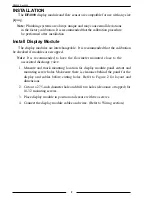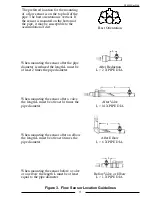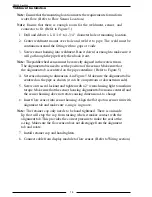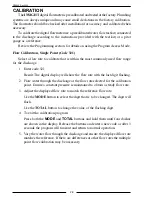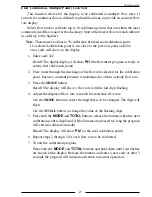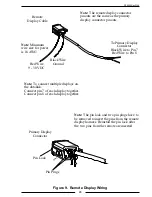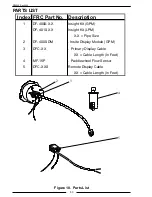
DF4000 Rev0204
19
PROGRAMMING
The two operator selectable modes are display module identification and program
access. These modes are selected and inputs are made by using the two buttons
on the
front of the display module. The digital display will show stored data and operator
inputs. (Refer to Figure 7.)
Note:
When in the display module identification mode or entering codes in
the program access mode there is a timeout feature that requires an
operator input be made every three seconds. If an input is not detected at
a button within three seconds the program will return to normal operation.
Inputs
The two buttons on the front of the display module allow the operator to gain
access to stored data and program functions.
The
MODE
button is used to access the display module identification mode and
to scroll through the stored identification data.
Both the
MODE
and
TOTAL
buttons are used to enter a program code.
Once a program code is entered the
MODE
button is used to select the digit to be
changed and the
TOTAL
button is used to change the digit or option choice.
Display Module Identification Mode
When in the module identification mode the digital display will show the module
serial number, manufactured date, software revision, function code, and ID number.
The module identification mode is a display only mode and no changes can be made
to program information.
Note:
There is a timeout feature that will return the program to normal
operation in three seconds if input is not detected at the
MODE
button.
Select Display Module Identification Mode
Turn on power. Press the
MODE
button, the program will enter the display module
identification mode and the display will show the module serial number. Press the
MODE
button a second time and the display will show the manufacturing date. Each
time the
MODE
button is pressed the display will show the next block of stored
identification data. (Refer to Figure 7.)




